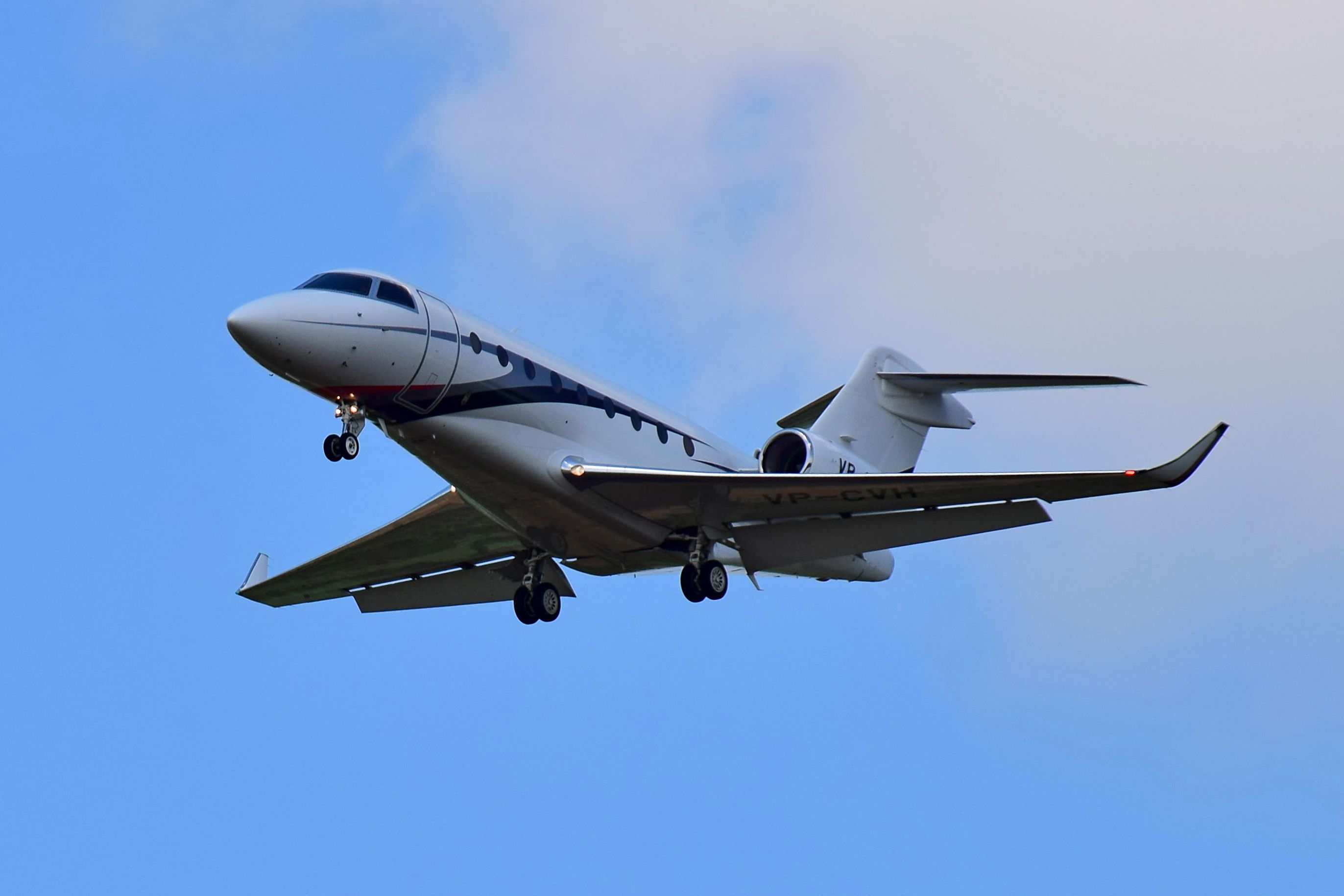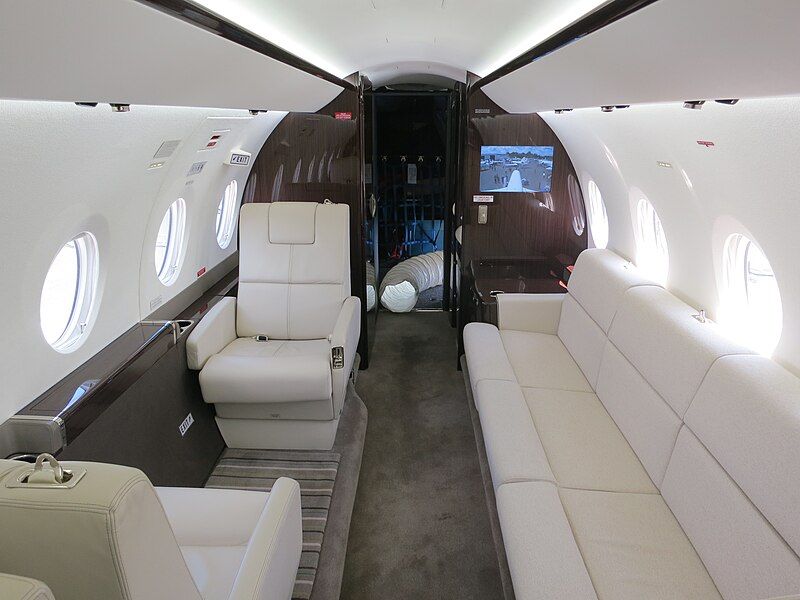Summary
- Gulfstream G280 reaches speeds up to Mach 0.84, making it one of the fastest aircraft in its class.
- The improved T-tail design of the G280 enhances lift, stability, and overall flight performance.
- The cabin of the G280 is enhanced with additional interior space and features, providing luxury and comfort.
The Gulfstream G280 is a midsized business jet built by Israel Aerospace Industries (IAI) for Gulfstream Aerospace. Designed in the mid-2000s, the aircraft performed its maiden flight in December 2009 in Tel Aviv and entered mass production the same year. Initially titled G250, it was later renamed G280 as a more amenable number sequence in some cultures.
The IAl manufactures the aircraft fuselage, empennage, and landing gear, while Triumph Group ships other components, including wings. The final assembly is done in Israel before the aircraft is ferried to Dallas, Texas, for exterior painting and interior furnishing. The twin-engine jet is known for its top speed in its class.
The Gulfstream G280
- Maximum speed: Mach 0.84 (560 knots, 650 mph, 1,040 km/h)
- Cruise speed: 459 knots (528 mph, 850 km/h)
Gulfstream did the aerodynamic design of the G280’s wings and empennage, whereas IAl performed the detailed interior design based on Gulfstream’s requirements. The manufacturer pioneered an efficient wing design that enables optimized performance and greater fuel efficiency during flight. Two Honeywell HTF7250 turbofan engines power the jet, each producing over 7,600 lbf (40 kN) of takeoff thrust. The engines, along with the design of the aircraft, make it one of the fastest in its class. According to LibertyJet,
“The Gulfstream G280 has it all. The high thrust engines push the aircraft to speeds of Mach .85 and higher. The long. sleek wings on the G280 allow it to perform at higher altitudes while burning less fuel. Powered by two Honeywell HTF7250G jet engines, the G280 can fly from New York City to London faster than any aircraft in its class while using less fuel.”

Related
Produced In Israel: A Look At The Gulfstream G280
The aircraft is assembled in Israel and ferried to the US for painting and interior furnishings.
Improvements over the predecessor
Seating Capacity: Ten in executive style
Payload: 4,050 lbs (1,840 kg)
Length: 66 ft 10 in (20.3 m)
Wingspan: 63 ft 0 in (19.2 m)
Height: 21 ft 4 in (6.5 m)
Wing area: 495 sq ft (46 m2)
Empty weight: 24,150 lb (10,954 kg)
Max takeoff weight: 39,600 lb (17,960 kg)
Powerplant: 2 x Honeywell HTF7250G turbofans
Thrust per engine: 7,624 lbf (33.91 KN) thrust each at altitude
Photo: Gulfstream
Developed from the G200, the G280 boasts several design and performance improvements over its predecessor. The new T-tail is designed with larger horizontal and vertical stabilizers, enabling greater lift, more stability, and enhanced flight performance at different phases of flight. Unlike some older models, the wings receive their anti-ice through engine bleed air rather than other mechanisms, such as electrical heating. High-pressure, high-temperature air from the engine compressor is bled and routed internally for warm air for wing anti-icing.
Note: Anytime the engine bleed air is utilized, it compromises engine performance. Therefore, manufacturers should be mindful of which compressor stage the air is bled at and the quantity of bleed air used for other purposes, such as anti-icing or cooling of engine components.
- Range: 3,600 NM (4,143 mi, 6,667 km) at Mach 0.80 with four passengers
- Service ceiling: 45,000 ft (13,716 m)
- Fuel consumption: 1,900 lb. per hour
The G280 wing design is based on the Gulfstream G550 airfoil, allowing superior laminar flow along the surface. The wing area of 495 square feet is 25% greater than the 369 square feet of the G200, allowing the jet to climb more efficiently and directly to the 43,000 ft (13,000 m) cruising altitude. The new wing enables Mach 0.8 design cruise compared to Mach 0.75 for the G200. When flying around cruise speed and at 41,000 ft (12,000 m), each engine burns 900 I (410 kg) of fuel per hour.

Related
Why Was The Gulfstream G250 Renamed To The G280?
The number 250 has different translations across other cultures.
Cabin enhancements
While the external fuselage dimensions remain unchanged, the cabin has several enhancements, including interior furnishings, a baggage area, and galley space. One notable feature is removing the rear fuselage fuel tank, allowing an additional 17 inches (43 cm) of usable interior space. The much-needed space is used for a baggage compartment accessible from the cabin. The additional cabin stretch allowed four more windows, making the cabin brighter and roomy.
Cabin dimensions
- Length: 25 ft 2 inches
- Width: 6 feet 1 inch
- Height: 6 feet 1 inch
- Volume: 935 cubic feet
Ten passengers can comfortably fit in executive-style seating. While the cabin can be reconfigured for maximum seating, most jets are designed for 8-12 passengers. With a nearly 80 cubic-foot baggage space, the compartment can hold up to 17 bags, with approximately five cubic feet per piece of luggage.
According to LibertyJet,
“Offering various configurations, the Gulfstream G280 provides its passengers with the best creature comforts in the super-midsize business jet market. With multiple designs allowing for a forward and aft cabin, the Gulfstream G280 offers plenty of luxury. Pairing that spaciousness with the 19 windows throughout, and you have a cabin that offers plenty of natural light. The G280 design allows it to pump in 100 percent fresh air, letting passengers arrive feeling refreshed and energized.”

Related
What Are 5 Unique Interior Features Of The Gulfstream G280?
Gulfstream has mastered the air, lighting, and acoustic systems on the G280.
What are your thoughts on the design and performance characteristics of the Gulfstream G280? Share your views in the comments section.



